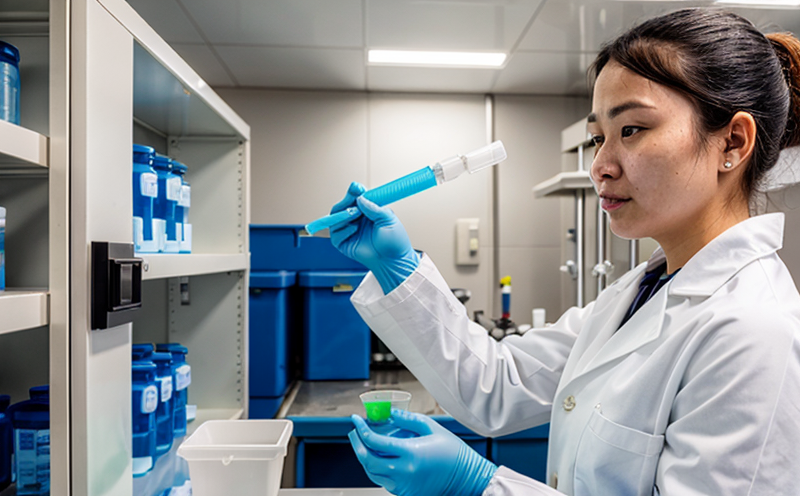USP Pyrogen Testing
In pharmaceutical testing, ensuring product purity and safety is paramount. One critical aspect of this is the detection of pyrogens in parenteral solutions and other injectable products through USP Pyrogen Testing.
The United States Pharmacopeia (USP) has established stringent guidelines for detecting pyrogens as part of its monograph 1076, which provides comprehensive information on testing methods. Pyrogens are endotoxins derived from the cell walls of gram-negative bacteria and can cause a febrile response in humans when introduced via injection.
The USP Pyrogen Test aims to ensure that pharmaceutical products do not contain levels of pyrogens high enough to induce a fever or other adverse reactions. This test is particularly important for parenteral drugs, intravenous solutions, and any other injectable products intended for human use.
The procedure involves exposing the sample to a rabbit test animal over several hours in a controlled environment. The rabbits are carefully monitored for signs of fever using an infrared thermometer or similar device. A positive result indicates the presence of pyrogens above acceptable limits, prompting further investigation and potential reprocessing of the batch.
The USP Pyrogen Test is not only a regulatory requirement but also a vital step in ensuring patient safety. Regulatory agencies such as the FDA and EMA mandate that pharmaceutical manufacturers comply with these standards to protect public health.
The methodology for this test has been refined over decades, incorporating advancements in both biotechnology and laboratory instrumentation. The use of standardized rabbit strains ensures consistent results across laboratories. Additionally, the implementation of aseptic techniques minimizes contamination risks during sample preparation and testing.
In summary, USP Pyrogen Testing is an essential component of pharmaceutical quality assurance, ensuring that injectable products are safe for patient administration. By adhering to these rigorous standards, manufacturers can demonstrate their commitment to regulatory compliance and patient safety.
Applied Standards
The USP Pyrogen Testing is governed by specific guidelines outlined in the United States Pharmacopeia (USP) monograph 1076. This document provides detailed instructions on sample preparation, testing procedures, and acceptance criteria.
The test involves inoculating rabbits with the sample under strict aseptic conditions. The rabbits are then monitored for signs of fever using infrared thermometers or other suitable devices. The results are compared against predefined thresholds to determine compliance with USP standards.
Other relevant international standards include ISO 14327, which provides additional guidance on the detection and control of endotoxins in pharmaceutical products. Compliance with these standards is crucial for ensuring that pharmaceutical products meet global regulatory requirements.
The use of standardized methods ensures consistency across different laboratories, thereby enhancing reliability and accuracy. This standardization is particularly important given the potential risks associated with pyrogen contamination.
Why Choose This Test
Selecting USP Pyrogen Testing for your pharmaceutical testing protocol offers several advantages:
- Regulatory Compliance: Ensures adherence to stringent USP guidelines and other relevant international standards.
- Patient Safety: Minimizes the risk of adverse reactions due to pyrogen contamination in injectable products.
- Quality Assurance: Provides a reliable method for assessing product purity and safety.
- Consistency: Standardized procedures ensure consistent results across different batches and laboratories.
In today’s competitive pharmaceutical landscape, patient trust is paramount. By incorporating USP Pyrogen Testing into your quality assurance program, you can enhance product safety and maintain compliance with regulatory requirements.
Use Cases and Application Examples
- Intravenous Solutions: Testing for pyrogens in IV fluids ensures patient safety during infusion therapy.
- Liposomal Preparations: Liposomes can encapsulate drugs, but they must be tested to ensure the absence of pyrogenic contaminants.
- Vaccines and Immunoglobulins: These products are critical for preventing infections; thorough testing is essential before market release.
- Certain Ophthalmic Preparations: Eye drops and other ophthalmic solutions must be tested to ensure they do not induce fever upon injection.
The USP Pyrogen Test is a cornerstone of pharmaceutical quality assurance, particularly for products intended for direct parenteral administration. By implementing this test, manufacturers can demonstrate their commitment to patient safety and regulatory compliance.





